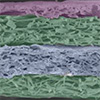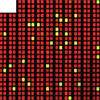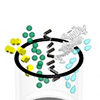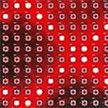Showing Spotlights 33 - 40 of 240 in category All (newest first):
 Researchers develop flexible health sensor with game-changing sensitivity. Integrating photoconductor and organic transistors enables exponential signal boost, allowing accurate continuous monitoring of heart rate, blood oxygen, blood pressure during normal daily activities.
Researchers develop flexible health sensor with game-changing sensitivity. Integrating photoconductor and organic transistors enables exponential signal boost, allowing accurate continuous monitoring of heart rate, blood oxygen, blood pressure during normal daily activities.
Aug 3rd, 2023
 Researchers have developed an innovative electronic skin patch that mimics attributes of human skin for sensing biomechanical and bioelectrical signals relevant to health monitoring. The device is skin-like stretchable, breathable, and has self-adhesive properties and superior capabilities for precision mobile health tracking.
Researchers have developed an innovative electronic skin patch that mimics attributes of human skin for sensing biomechanical and bioelectrical signals relevant to health monitoring. The device is skin-like stretchable, breathable, and has self-adhesive properties and superior capabilities for precision mobile health tracking.
Jul 18th, 2023
 Integrated microfluidic platforms that combine automated sample preparation with on-chip nucleic acid amplification tests enable rapid, accurate molecular diagnostics at home for improved preventive medicine and biosecurity.
Integrated microfluidic platforms that combine automated sample preparation with on-chip nucleic acid amplification tests enable rapid, accurate molecular diagnostics at home for improved preventive medicine and biosecurity.
Jul 13th, 2023
 By adopting a single-enzyme approach, scientists have unlocked a new era in enzymatic biofuel cell technology, where one device serves a dual purpose: harvesting electricity and providing an analytical signal for glucose detection, all powered by a single enzyme, glucose oxidase, on both the anode and cathode.
By adopting a single-enzyme approach, scientists have unlocked a new era in enzymatic biofuel cell technology, where one device serves a dual purpose: harvesting electricity and providing an analytical signal for glucose detection, all powered by a single enzyme, glucose oxidase, on both the anode and cathode.
Apr 13th, 2023
 In an effort to reduce the size of optical spectrometers, researchers have been working on developing miniature on-chip spectrometers that could be integrated into small handheld devices or even smartphones. Now, reducing the size down to the micrometer scale, researchers have developed a single-dot spectrometer based on an in situ modulated perovskite photodetector. The device is enabled by photogain manipulation controlled by ion redistribution in the perovskite film under an externally applied bias. This unique spectrometer design breaks the footprint-resolution restriction of spectrum analysis and leads to a new design direction of perovskite in situ modulation for the development of new functional devices.
In an effort to reduce the size of optical spectrometers, researchers have been working on developing miniature on-chip spectrometers that could be integrated into small handheld devices or even smartphones. Now, reducing the size down to the micrometer scale, researchers have developed a single-dot spectrometer based on an in situ modulated perovskite photodetector. The device is enabled by photogain manipulation controlled by ion redistribution in the perovskite film under an externally applied bias. This unique spectrometer design breaks the footprint-resolution restriction of spectrum analysis and leads to a new design direction of perovskite in situ modulation for the development of new functional devices.
Oct 13th, 2022
 Researchers demonstrate a multitarget real-time trajectory tracking system by using a time-division position sensitive detector (TD-PSD) system by employing a graphene-silicon Schottky heterojunction. The system allows for multi-target real-time trajectory tracking with a maximum image output frame rate of up to 62 000 frames per second (which is superior to commercial optical high-speed motion capture systems of about 1000 frames per second). This breaks the bottleneck in precise high-speed trajectory tracking and multi-target detection of traditional position sensitive detectors.
Researchers demonstrate a multitarget real-time trajectory tracking system by using a time-division position sensitive detector (TD-PSD) system by employing a graphene-silicon Schottky heterojunction. The system allows for multi-target real-time trajectory tracking with a maximum image output frame rate of up to 62 000 frames per second (which is superior to commercial optical high-speed motion capture systems of about 1000 frames per second). This breaks the bottleneck in precise high-speed trajectory tracking and multi-target detection of traditional position sensitive detectors.
Oct 10th, 2022
 New research describes the first example of self-powered bioelectronics on a mask that can measure the biological glucose signal with continuous energy. In their work, the researchers demonstrate a 3-in-1 mask device that can 1) harvest energy (a biofuel cell); 2) store energy (a supercapacitor); and 3) indicate glucose concentration (a biosensor). The small biofuel cells can harvest energy from the sweat on a person's face and indicate the level of the analyte that tracks health and nutrition.
New research describes the first example of self-powered bioelectronics on a mask that can measure the biological glucose signal with continuous energy. In their work, the researchers demonstrate a 3-in-1 mask device that can 1) harvest energy (a biofuel cell); 2) store energy (a supercapacitor); and 3) indicate glucose concentration (a biosensor). The small biofuel cells can harvest energy from the sweat on a person's face and indicate the level of the analyte that tracks health and nutrition.
Sep 19th, 2022
 Researchers have developed a sprayable on-site sensing tool. The main application area for this sensor spray is the detection of specific analytes in an environment where sample collection is a difficult task either due to the target chemicals themselves or the area where the samples are located. A nebulization method allows for nanofibers to be sprayed onto any surface, while the accompanying phone-based application allows for direct on-site detection.
Researchers have developed a sprayable on-site sensing tool. The main application area for this sensor spray is the detection of specific analytes in an environment where sample collection is a difficult task either due to the target chemicals themselves or the area where the samples are located. A nebulization method allows for nanofibers to be sprayed onto any surface, while the accompanying phone-based application allows for direct on-site detection.
Jun 27th, 2022
 Researchers develop flexible health sensor with game-changing sensitivity. Integrating photoconductor and organic transistors enables exponential signal boost, allowing accurate continuous monitoring of heart rate, blood oxygen, blood pressure during normal daily activities.
Researchers develop flexible health sensor with game-changing sensitivity. Integrating photoconductor and organic transistors enables exponential signal boost, allowing accurate continuous monitoring of heart rate, blood oxygen, blood pressure during normal daily activities.
 Subscribe to our Nanotechnology Spotlight feed
Subscribe to our Nanotechnology Spotlight feed





